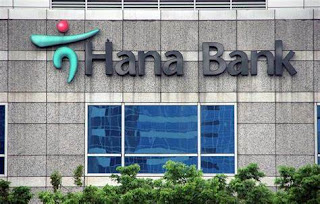South Korea's Hana Bank to Work on CBDC and Stablecoin Alternatives. By Laurie Suarez www.crypto101bylauriesuarez.com
Introduction
Central Bank Digital Currencies (CBDCs) and stablecoins have been gaining significant attention from governments and financial institutions worldwide. South Korea's Hana Bank, one of the country's leading financial institutions, has recently announced its plans to delve into the world of CBDCs and explore stablecoin alternatives. This move comes as part of the bank's efforts to stay ahead in the rapidly evolving landscape of digital finance.
In this article, we will delve into the significance of Hana Bank's initiatives and how they might shape the future of digital currencies in South Korea.
Understanding CBDCs and Stablecoins
Before delving into Hana Bank's initiatives, let's briefly understand the concepts of CBDCs and stablecoins.
Central Bank Digital Currencies (CBDCs): CBDCs are digital representations of a country's fiat currency issued and regulated by its central bank. Unlike cryptocurrencies like Bitcoin or Ethereum, CBDCs aim to retain the stability of traditional currencies while leveraging the benefits of blockchain technology. They can serve as a digital form of legal tender and facilitate more efficient cross-border payments, financial inclusion, and monetary policy implementation.
Stablecoins: Stablecoins are a type of cryptocurrency designed to have a stable value by being pegged to a reserve of assets, such as fiat currencies, commodities, or other cryptocurrencies. The stability of stablecoins makes them attractive for everyday transactions and as a potential bridge between traditional finance and the world of digital currencies.
Hana Bank's CBDC Explorations
Recognizing the potential transformative impact of CBDCs on the financial industry, Hana Bank has initiated efforts to explore the possibilities of developing a digital version of the South Korean won. The bank's research and development teams are collaborating with blockchain experts and fintech companies to study the technical aspects, potential use cases, and implications of introducing a CBDC.
The primary objectives of Hana Bank's CBDC explorations include:
Efficiency and Security: CBDCs could streamline payment systems, reducing transaction costs and processing times. Additionally, the use of blockchain technology can enhance the security and transparency of financial transactions.
Financial Inclusion: A digital won could improve financial access for underbanked and remote populations, allowing them to participate in the digital economy more easily.
Monetary Policy Implementation: CBDCs offer central banks new tools for implementing monetary policy and managing economic stability.
Reducing Cash Usage: A digital currency could reduce reliance on physical cash, potentially leading to cost savings in currency production and management.
Hana Bank's Interest in Stablecoin Alternatives
In addition to its CBDC explorations, Hana Bank is also showing interest in stablecoin alternatives. Stablecoins offer certain advantages over CBDCs, especially in the realm of cross-border transactions and international trade.
By investigating stablecoin alternatives, Hana Bank aims to:
Enhance Cross-Border Payments: Stablecoins can facilitate faster and more cost-effective cross-border transactions compared to traditional banking systems.
Improve Trade Efficiency: Stablecoins can simplify international trade by reducing currency conversion complexities and settlement delays.
Digital Asset Management: Stablecoins can provide a bridge between traditional financial assets and the emerging world of digital assets, enabling new investment opportunities.
Regulatory and Technological Challenges
While Hana Bank's initiatives in the realm of CBDCs and stablecoins are promising, they are not without challenges. The development and adoption of CBDCs and stablecoins require careful consideration of regulatory frameworks, data privacy, consumer protection, and potential risks associated with digital currencies.
Moreover, the technical infrastructure and cybersecurity measures necessary to support large-scale CBDC or stablecoin implementations demand thorough planning and testing.
Conclusion
Hana Bank's decision to explore CBDCs and stablecoin alternatives signals a progressive stance in embracing digital innovation in the financial sector. By actively engaging with emerging technologies like blockchain and cryptocurrencies, Hana Bank aims to remain at the forefront of the digital finance revolution.
As South Korea's financial landscape evolves, the successful integration of CBDCs or stablecoin solutions could pave the way for enhanced financial inclusion, more efficient payment systems, and improved cross-border transactions. However, the journey towards adopting digital currencies will require collaboration between financial institutions, regulators, and technology experts to navigate the challenges and unlock the full potential of these innovative financial tools.
 |
| Hana Bank |


Comments
Post a Comment